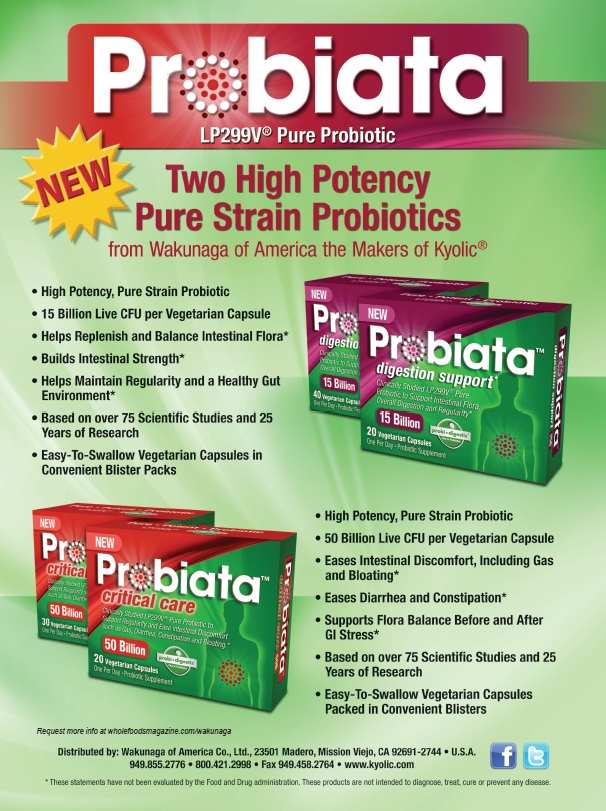I was driving to the office one Tuesday morning when I heard a news report that ended up occupying my attention for the week to come. Results from DNA testing of herbal supplements—requested by New York’s attorney general Eric Schneiderman—painted a dark picture of the supplement industry. Several store brand products had reportedly failed identity tests by including ingredients in the formulas that weren’t supposed to be there and by leaving out important active herbal ingredients. The commentator implied in a mocking tone that companies had tried to circumvent those “pesky DNA tests.”
My gut reaction was frustration. Again, I thought, a few unscrupulous companies are giving everyone in this industry a bad name by putting subpar products on the shelf. Especially when large retailers like the ones mentioned are involved, this kind of news makes shoppers distrust supplements, even the carefully sourced, formulated and manufactured products that are widely sold.
In researching the matter though, I soon realized how incredibly slanted this story actually was. In my view, Schneiderman acted on the findings too quickly and too harshly—ignoring those pesky facts about supplements testing.
It’s All in the Details
It turns out that using DNA barcoding to test supplement quality and identity is not as black and white as Schneiderman made it seem when he demanded that companies pull products from shelves and advised shoppers to adopt a “buyer beware” mentality for herbal supplements.
 The technology is pretty new and has limitations like—oh, let’s see—testing for DNA in finished products that are often void of DNA because of the extraction process.
The technology is pretty new and has limitations like—oh, let’s see—testing for DNA in finished products that are often void of DNA because of the extraction process.
Legitimate manufacturers often use several testing methods to ensure the identity of raw materials and the quality of end products, like various types of chromatography and mass spectrometry. DNA barcoding may be appropriate in some instances, but not on its own for every finished herbal product on the market.
This report and the Attorney General’s strong actions leave us with many unanswered questions—and not about herbal products:
If Schneiderman truly cares about quality testing of herbal products, why would he choose DNA barcoding? It doesn’t take much to learn that the methods of evaluating herbal extracts in this case are incomplete by some measures, and flawed by others. If any flags were raised about the products, the legal team should have collected more evidence rather than vilify an entire industry. One may wonder whether they intentionally turned a blind eye to the reality of herbal testing.
Why would Schneiderman choose James Schulte, Ph.D., of Clarkson University to conduct the tests? Looking at his C.V., Schulte seems to be really into genetics and is considered an expert in DNA testing…of lizards and snakes, that is. The amount of papers he’s published on the evolution of reptiles is impressive, but I didn’t see anything indicating he comes anywhere close to being an expert on herbs. Which leads me to my next question…
Why would the zoologist agree to do testing in a field he isn’t skilled in? If Schulte is an expert in DNA testing, he should have respected the fact that if DNA is modified or denatured in any way (as is often the case with  herbal extraction), the testing won’t be accurate. If there’s even a chance for a DNA sample to have incomplete or degraded content (like with herbal extracts), the expert should have made that a part of his findings. Perhaps, he did. Perhaps, he didn’t. Perhaps, we will never know because the full report hasn’t been made available.
herbal extraction), the testing won’t be accurate. If there’s even a chance for a DNA sample to have incomplete or degraded content (like with herbal extracts), the expert should have made that a part of his findings. Perhaps, he did. Perhaps, he didn’t. Perhaps, we will never know because the full report hasn’t been made available.
In the end, the story generated incredible negative press for the industry, and we should thank our industry trade associations for attempting to combat it and show the full picture of herbal testing and the shortcomings of DNA barcoding. This whole issue is a frustrating reminder this industry has a target on its back, and when we see adversaries coming at us without merit, it’s important for all of us to speak up. WF
Kaylynn Chiarello-Ebner
Editor/Associate Publisher
Published in WholeFoods Magazine, March 2015










